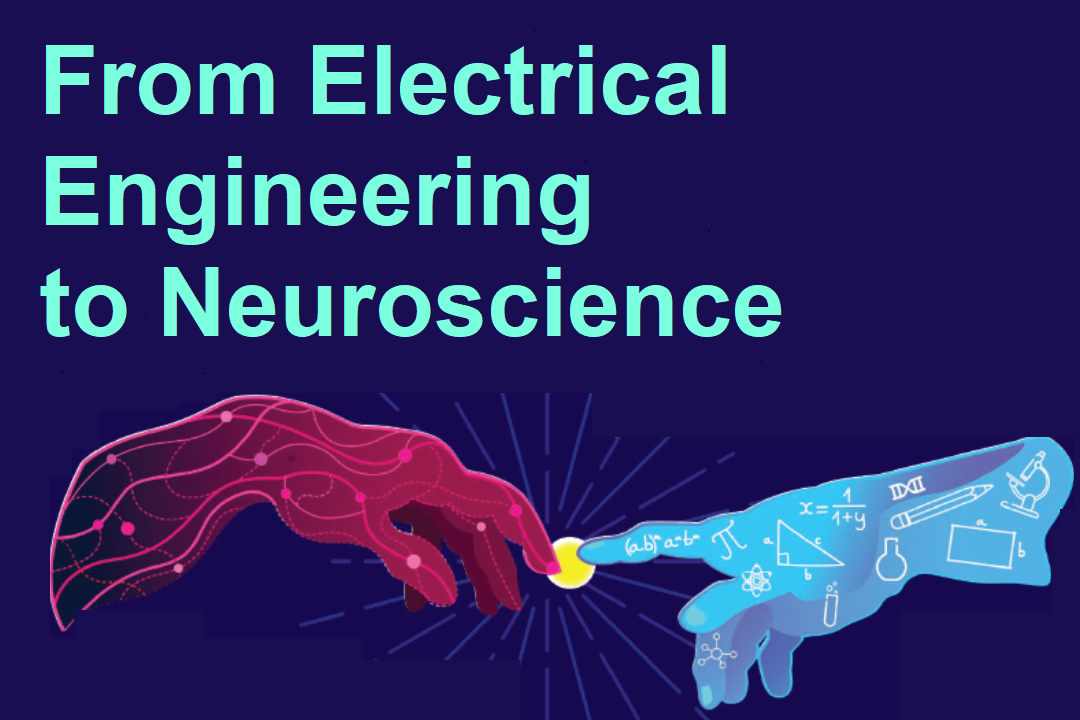
From Electrical Engineering to Neuroscience
Neuroscience is an interdisciplinary research area which involves studying the nervous systems of different organisms. It is further divided into various subdisciplines depending on the scale of investigation, such as systems neuroscience, cognitive and behavioural neuroscience, molecular neuroscience, and theoretical/computational neuroscience. The field of neuroscience attracts interest from a wide variety of scientific domains. Mathematicians, physicists, engineers, computer scientists and the like are all actively participating in trying to uncover the mechanisms and functions of the brain.
I am an electrical engineer-turned neuroscientist. With a Bachelor’s and a Master’s degree in electrical engineering, I was still unsure about the research area I wanted to pursue. I was really inspired by the field of computational neuroscience which builds computational models that can help us understand and derive simpler explanations of how brains achieve complex functionality. To get a little flavor, I started working on building some computational models (recurrent neural networks to be precise) to understand how brains achieve volitional motor control abstractly.
The different types of movements that we are able to generate as humans are ultimately encoded as spatiotemporal patterns of neural activity within different brain regions. It is important to understand how such spatiotemporally varying patterns of neural activity could drive muscles and in turn generate desired movements and behaviours. In our experiments, we were able to embed such spatiotemporal activity patterns in the recurrent networks, which were stimulus specific, robust, and could be recalled efficiently. We argued that the abstract model provided many of the desired characteristics for flexible generation and recall of complex movements. Thus, we were able to derive a simple explanation of how voluntary motor control could be achieved with a system having certain desired properties. As one can imagine, research of this kind in computational neuroscience could have crucial ramifications for artificial intelligence (AI) as well.
This was my first foray into neuroscience. I often had this uneasy feeling that I was only doing work in silico and was not able to conduct experiments and study biological brains directly. To this end, I was fortunate to work as a research engineer at the Stanford Medicine in a Movement Disorders Center for a couple of years. It was exciting to be able to study movements in human patients and potentially test my computational models on real movement data. This was also my first experience in clinical / motor neuroscience which studies a variety of brain functions and their disorders, including the Parkinson’s disease.
The Parkinson’s disease is a debilitating neurological disorder with a prevalence of around 0.5-1% in Pakistan. It is a movement disorder where patients are unable to generate desired movements and suffer from tremor, bradykinesia (slowness of movement), and freezing of gait among other symptoms. Our centre used a surgical procedure called Deep Brain Stimulation (DBS) to improve quality of lives of these patients. In DBS, electrodes implanted within certain brain regions of the patients provide electrical stimulation to those regions and it often leads to a drastic reduction in symptoms such as tremor and bradykinesia.
There are different theories about the mechanisms through which DBS works but a lot is still unknown, and this is an active and a relatively new research area. The electrodes which are implanted and internalized for stimulation sometimes also have the ability to record brain waves (local field potentials) from those brain regions.
This is how we get an interdisciplinary field of research where engineers and computer scientists try to make sense of these brain waves and derive some of the mechanism underlying disease pathophysiology.
I worked on some projects where I used signal processing and machine learning (ML) techniques to find neural biomarkers related to different symptoms of the disease.
I also had the opportunity of working on a project that involved closed-loop control of symptoms in these patients. Simply: find a neural biomarker related to a symptom (say elevated power in beta rhythm), define a control algorithm to maintain the biomarker in some desired state, record neural activity from the brain region, let the control algorithm determine if the biomarker (brain waves) is aberrant, and perform stimulation algorithmically to maintain the biomarker in a particular state and ultimately improve the symptoms—all in real-time. Such closed-loop control has proved to be more efficient than the open-loop versions with respect to side effects and other aspects. It is fascinating to see that we can manipulate brain circuits in real-time to achieve some desired functionality and improve symptoms in human patients, much like an electrical engineer manipulates electrical circuitry to achieve the desired performance in a system.
We recorded and stimulated in the subthalamic nuclei of these patients, an important detail from a neuroscience perspective, which are roughly part of the basal ganglia network, which in turn is involved in motor control.
In short, we listened to the brains of the patients to do the perturbations that would make them better. I am also involved in a project that uses DBS to control symptoms in treatment-resistant depression. It is very insightful to view these mental disorders as abnormalities in circuits or networks in the brain, as it allows us to perform precise perturbations that could help fix them.
For a country where neurological disorders like the Parkinson’s are on the rise, it is disappointing to note the lack of neuroscience research in Pakistan. It is definitely time that we set up such interdisciplinary research and education centres in Pakistan where people can work on different subdomains and add to the growing knowledge in these areas. This new appreciation of the potential of neuroscience might also help reduce the stigma associated with certain mental disorders in our society, such as depression.

